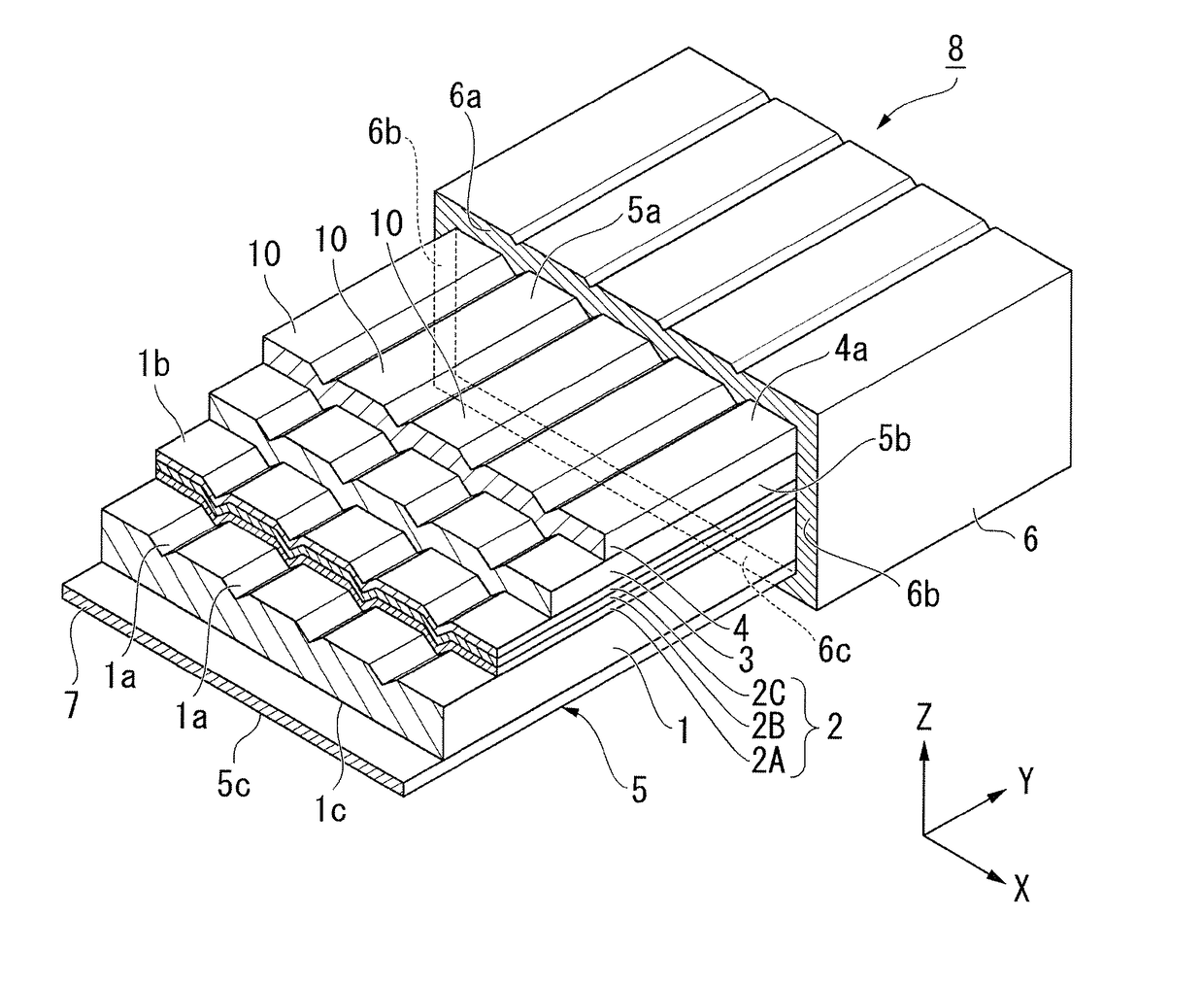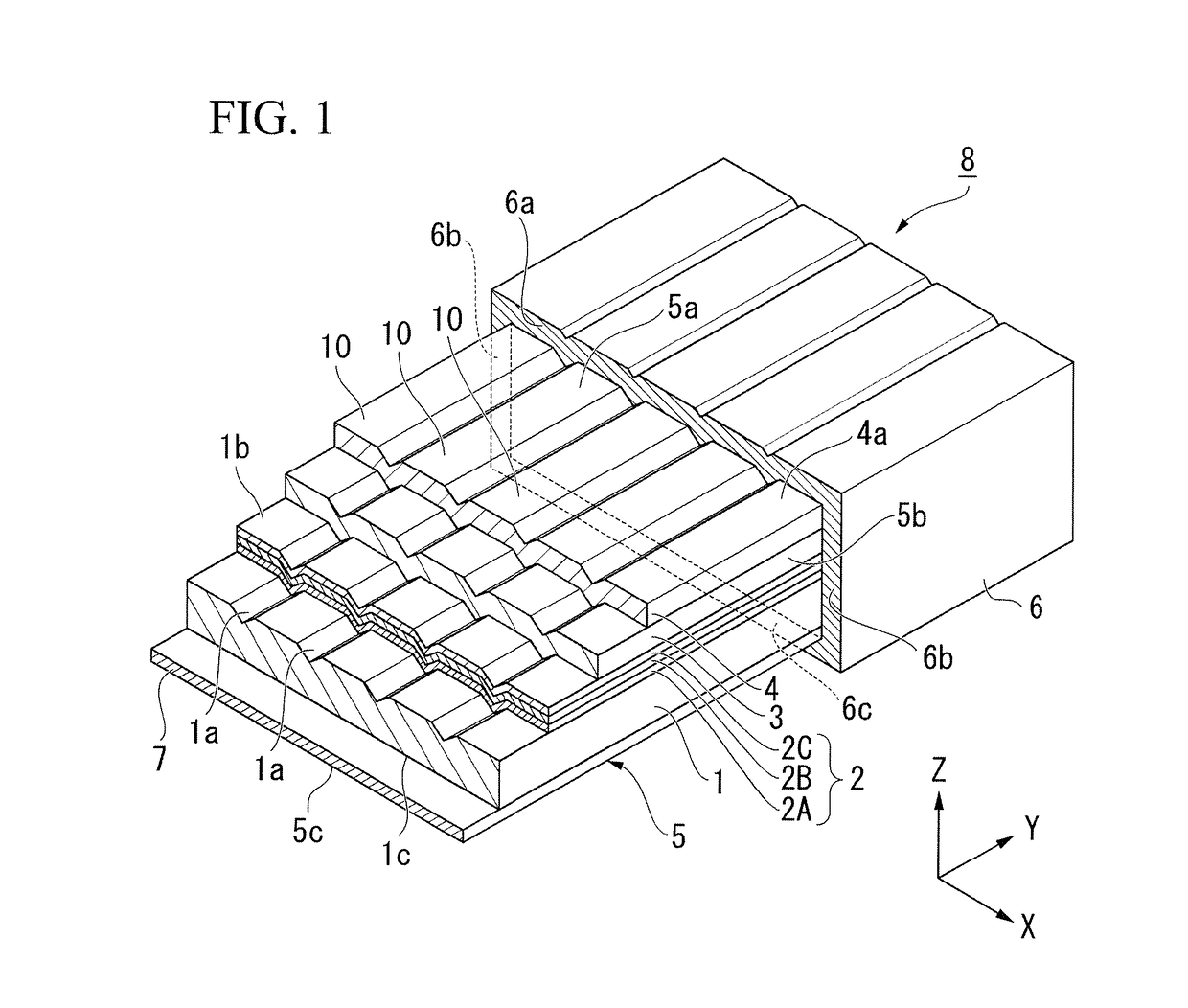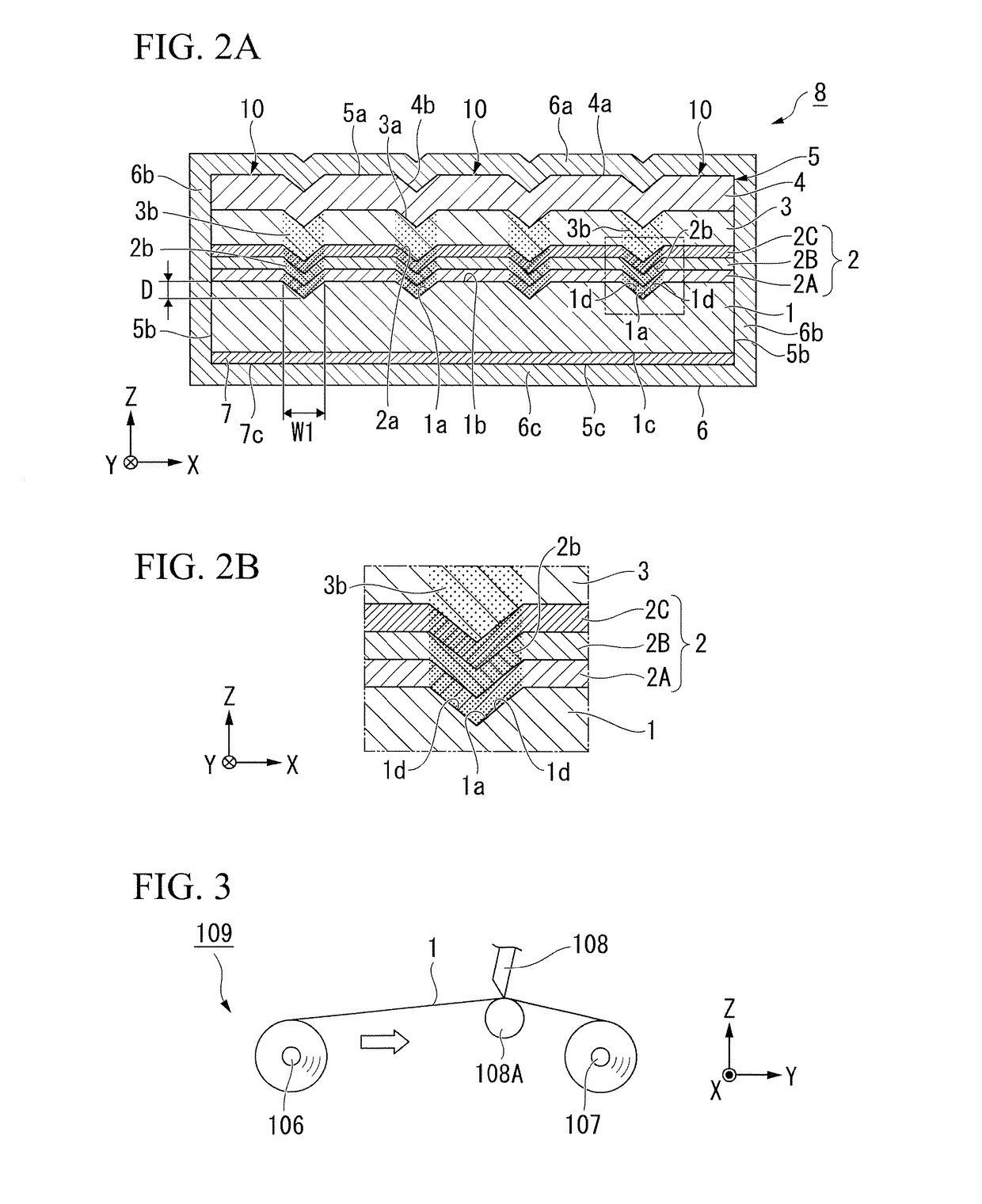Oxide superconducting wire
- Summary
- Abstract
- Description
- Claims
- Application Information
AI Technical Summary
Benefits of technology
Problems solved by technology
Method used
Image
Examples
first embodiment
[0047]FIG. 1 shows a sectional perspective view of an oxide superconducting wire 8 according to the present embodiment. FIG. 2A shows a horizontal sectional schematic view of the oxide superconducting wire 8 according to the present embodiment. FIG. 2B shows a sectional enlarged view of the oxide superconducting wire 8 according to the present embodiment.
[0048]As shown in FIGS. 1, 2A, and 2B, the oxide superconducting wire 8 according to the present embodiment has a laminate 5 and a metal layer 6 formed at the outer circumference of the laminate 5.
[0049]The laminate 5 is constituted by laminating an intermediate layer 2, an oxide superconducting layer 3, and a metal-stabilizing layer 4 (first metal-stabilizing layer) in this order on a main surface 1b (first surface) of a base material 1 and forming a foundation layer (base material foundation layer) 7 on a rear surface 1c (second surface) of the base material 1. In other words, in the laminate 5, the base material 1 is formed on th...
modification example of first embodiment
[0132]FIGS. 4A and 4B show sectional views of an oxide superconducting wire 18 which is a modification example of the oxide superconducting wire 8 according to the first embodiment.
[0133]The oxide superconducting wire 18 is different from the oxide superconducting wire 8 shown in FIG. 1 in terms of the use of a metal layer 16 constituted of metal tape instead of the metal layer 6 formed by means of plating. Hereinafter, the same constitution as in the oxide superconducting wire 8 according to the first embodiment will be given the same reference number and will not be described.
[0134]The metal layer 16 is formed so as to cover at least the main surface 5a and the side surface 5b of the laminate 5.
[0135]In detail, as shown in FIG. 4B, the metal layer 16 has a main surface portion 16a, side surface portions 16b and 16b, and a rear surface portion 16c. The main surface portion 16a is provided on the main surface 4a side of the metal-stabilizing layer 4 and covers the main surface 4a. T...
second embodiment
[0144]Next, a second embodiment will be described.
[0145]FIG. 5A shows a sectional view of an oxide superconducting wire 28 according to the second embodiment. In addition, FIG. 5B is an enlarged view of a non-orientation region 33b in an oxide superconducting layer 33. Hereinafter, the oxide superconducting wire 28 will be described on the basis of FIGS. 5A and 5B.
[0146]The oxide superconducting wire 28 according to the second embodiment is different from the oxide superconducting wire 8 according to the first embodiment in terms of the constitution of a recessed groove portion 32Ba. Hereinafter, the same constitution as in the oxide superconducting wires 8 and 18 which are the first embodiment and the modification example of the first embodiment will be given the same reference number and will not be described.
[0147]As shown in FIGS. 5A and 5B, the oxide superconducting wire 28 includes a laminate 15 and the metal layer 6 formed on the outer circumference of the laminate 15.
[0148]T...
PUM
| Property | Measurement | Unit |
|---|---|---|
| Superconductivity | aaaaa | aaaaa |
| Crystal orientation | aaaaa | aaaaa |
Abstract
Description
Claims
Application Information
 Login to View More
Login to View More - R&D
- Intellectual Property
- Life Sciences
- Materials
- Tech Scout
- Unparalleled Data Quality
- Higher Quality Content
- 60% Fewer Hallucinations
Browse by: Latest US Patents, China's latest patents, Technical Efficacy Thesaurus, Application Domain, Technology Topic, Popular Technical Reports.
© 2025 PatSnap. All rights reserved.Legal|Privacy policy|Modern Slavery Act Transparency Statement|Sitemap|About US| Contact US: help@patsnap.com



